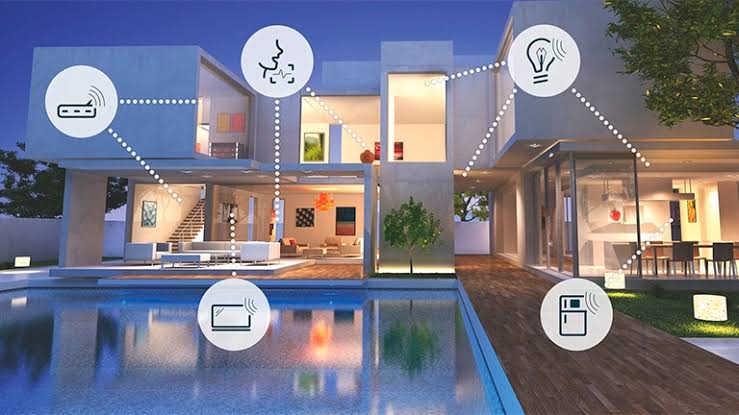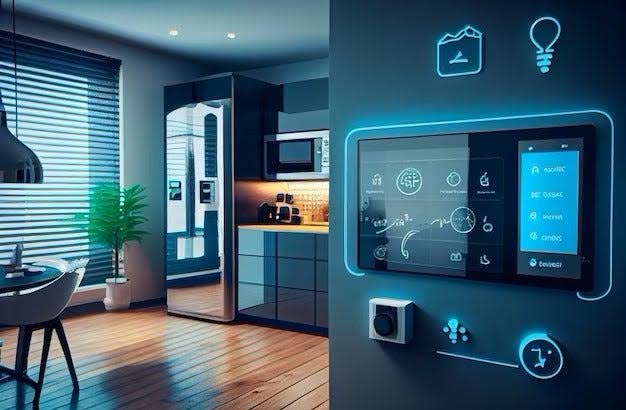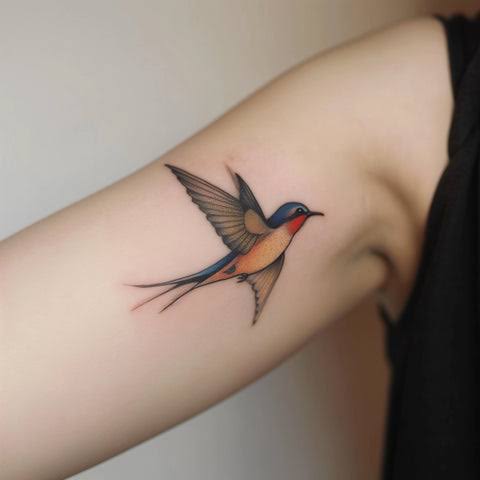Smart Homes: Integrating Technology with Design
 The concept of a “smart home” is no longer a futuristic vision, it’s a present reality that’s rapidly evolving. Integrating technology into home design is a growing trend, driven by the desire for convenience, efficiency, and enhanced living experiences.
The concept of a “smart home” is no longer a futuristic vision, it’s a present reality that’s rapidly evolving. Integrating technology into home design is a growing trend, driven by the desire for convenience, efficiency, and enhanced living experiences.
Smart homes use a combination of internet-connected devices, automated systems, and smart appliances to create a more intuitive, responsive, and personalized living environment. Here’s how smart technology is being seamlessly integrated into interior design, transforming homes into smarter, more efficient spaces.
1. Smart Lighting Solutions
Lighting is a key component of smart home design, and smart lighting solutions are becoming increasingly popular due to their flexibility and energy efficiency. These systems allow homeowners to control lighting remotely using smartphones or voice commands through devices like Amazon Alexa, Google Home, or Apple HomeKit. Key features of smart lighting include:
- Customizable Ambiance: Homeowners can adjust lighting brightness, color, and temperature to suit different moods or activities, such as a bright, energizing light for working and a warm, soft glow for relaxing.
- Energy Efficiency: Smart lights can be programmed to turn off when no one is in the room, reducing energy consumption and utility bills.
- Integration with Other Devices: Smart lighting can be synced with other smart home devices, such as blinds and thermostats, to create a fully automated environment. For example, lights can dim when a smart TV is turned on to create a home theater experience.

2. Smart Thermostats and Climate Control
Smart thermostats are revolutionizing how homeowners manage their heating and cooling systems. These devices learn a household’s routine and adjust temperatures accordingly to optimize comfort and energy efficiency. Some of the benefits include:
- Energy Savings: By automatically adjusting temperatures when the home is empty, smart thermostats help reduce energy waste and lower utility costs.
- Remote Control: Homeowners can control the temperature of their home from anywhere using a smartphone app, ensuring the home is comfortable upon arrival.
- Integration with Smart Home Ecosystems: These devices can work in tandem with smart blinds, ceiling fans, and even weather reports to maintain optimal indoor temperatures.
3. Smart Security Systems
Home security has seen significant advancements with the introduction of smart technology. Smart security systems provide peace of mind by allowing homeowners to monitor their property remotely and receive real-time alerts. Key features include:
Smart Cameras: These cameras provide live feeds that can be accessed from a smartphone, allowing homeowners to monitor their property from anywhere in the world. Some models also have facial recognition capabilities and night vision.
Smart Locks: Homeowners can lock or unlock doors remotely, provide temporary access codes to guests, and receive notifications when someone enters or exits the home.
Integrated Security Systems: Complete smart security systems can include alarms, motion sensors, and glass break detectors, all of which can be controlled through a single app or smart hub.
4. Smart Kitchens and Appliances
The kitchen is one of the most important spaces in a home, and smart technology is enhancing both its functionality and convenience. Smart kitchens feature a range of innovative appliances and gadgets, such as:
- Smart Refrigerators: These can monitor food inventory, suggest recipes based on available ingredients, and even create grocery lists. Some models have touchscreens that can serve as family hubs, displaying calendars, notes, and photos.
- Smart Ovens and Cooktops: These appliances can be preheated remotely, suggest cooking times and temperatures for various dishes, and even shut off automatically to prevent overcooking or burning.
- Voice-Activated Assistants: Devices like Amazon Echo or Google Nest Hub can assist with cooking by providing recipes, setting timers, or controlling other smart appliances.

5. Home Automation Systems
A truly smart home integrates various devices and systems to create an automated environment that responds to the homeowner’s needs and preferences. This is achieved through:
- Smart Hubs and Controllers: These act as the brain of the smart home, allowing different devices to communicate and work together seamlessly. Smart hubs can control lighting, heating, security, and entertainment systems from a single interface.
- Automation Routines: Homeowners can create routines or “scenes” that automate multiple tasks simultaneously. For example, a “Good Night” routine might turn off lights, lock doors, adjust the thermostat, and arm the security system with a single command.
- Voice Control and AI Integration: Voice assistants like Alexa, Google Assistant, and Siri allow for hands-free control of smart home devices, adding convenience and accessibility, especially for those with limited mobility.
6. Smart Entertainment and Media
Smart technology is also transforming home entertainment, offering more personalized and immersive experiences. This includes:
- Smart TVs: These devices offer access to streaming services, voice control, and the ability to integrate with other smart home devices for a seamless entertainment experience.
- Multi-Room Audio Systems: Smart speakers and sound systems can be controlled individually or synced to play music throughout the home, all controlled via a smartphone or voice commands.
- Augmented Reality (AR) and Virtual Reality (VR): These technologies are being integrated into home entertainment setups, providing immersive gaming, movie-watching, and even virtual tours of vacation spots or museums.
7. Health and Wellness Integration
Smart homes are increasingly focusing on health and wellness, offering features that promote a healthy lifestyle:
Air Quality Monitors: These devices track indoor air quality and provide alerts when air quality drops, helping to maintain a healthy environment.
Smart Fitness Equipment: Treadmills, stationary bikes, and other fitness equipment now come with smart features like workout tracking, personalized training programs, and the ability to connect with virtual trainers.
Smart Sleep Solutions: Smart beds and sleep trackers monitor sleep patterns and adjust mattress firmness, room lighting, and even temperature to promote better sleep.

How to Integrate Smart Technology into Your Home Design
Integrating smart technology into home design requires careful planning to ensure that the technology enhances rather than disrupts the living space. Here are some tips:
Start with a Plan: Determine which areas of your home would benefit most from smart technology and prioritize these in your design plan.
Choose a Compatible Ecosystem: To ensure that all your devices work together seamlessly, choose smart devices that are compatible with the same ecosystem, such as Google, Amazon, or Apple.
Conceal Technology Where Possible: To maintain a clean and uncluttered look, consider ways to hide or blend technology into the design of the home. This might involve hiding cables, installing smart speakers in walls or ceilings, or choosing appliances with a minimalist design.
Focus on Functionality: While smart technology can offer many benefits, it’s important to ensure that each device serves a useful purpose and adds value to the home.
Conclusion
Smart home technology is revolutionizing the way we live, offering greater convenience, efficiency, and security. By integrating smart technology with thoughtful design, homeowners can create spaces that are not only beautiful but also highly functional and responsive to their needs. As technology continues to advance, the possibilities for smart home integration are endless, promising an exciting future for home design.


